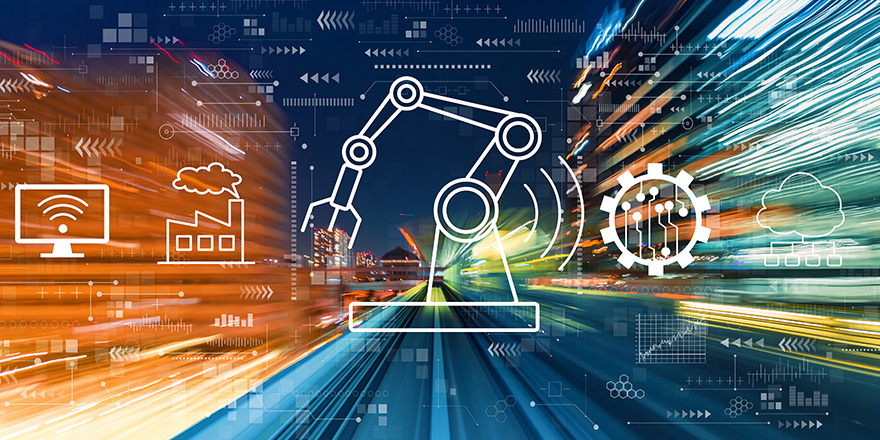Why hyperautomation is one of the top trends for 2022
Hyperautomation is when you combine artificial intelligence, machine learning, IoT and robotic process automation. Learn more about hyperautomation trends.

Hyperautomation is not just a buzzword (although it is a good one), it is a trend that is about to move from slow burn to incendiary in 2022.
And… it is number one on my list of trends for next year. These include making data more 3D by adding context; companies will learn that a truly connected customer experience is no longer an option; and the pandemic will force corporate culture to embrace a digital transformation mindset.
- Hyperautomation: The hype is warranted
Because automation is a goal that’s increasingly important for organizations, looking to either find efficiencies in their processes or to differentiate their services, the hype around automation is real enough.
When you combine artificial intelligence, machine learning (AI/ML) the Internet of Things and robotic process automation (RPA) together you get hyperautomation. And this is where companies sit up and take notice. RPA takes the drudge work away from humans and now AI/ML and IoT will smooth the path to automating tasks end-to-end, freeing up and re-focusing human skills. Finally it’s even possible to automate the development of new products or services.
One caution: Hyperautomation must be done in a standardized way. If RPA is not done with consistent protocols across the business, for instance, there will be significant issues at the point at which different bots need to connect.
- Data will be seen in 3D
The world is swimming in data. But it is mostly one-dimensional, which offers few real insights. Context is what gives it the real-life slant, offering an extra dimension to making decisions around the data.
Adding context has been a challenge since big data projects began, due to the difficulties of combining low-velocity data in warehouses and the high-velocity operational data that enables context. As data platforms become more sophisticated and allow more plug-and-play integrations, and more built-in analytics, you will begin to see the beginnings of a data fabric – making the addition of context more of a reality.
There are already examples of companies that can combine weather information, supply chain data and worker scheduling to visualize and avoid delivery bottlenecks. Visualizing this data along with context gives companies a 3D view of anything they need visibility into, ensuring that their implementations are done in the right way, at the right time.
- Customers will start to feel more connected
Customer expectations are only going one way – up, up, up. However businesses are still a step behind. For instance, 76% of customers expect consistent interactions across departments – what we’d call a connected customer experience – but 54% say it feels like sales, service, and marketing teams don’t share information.
Companies are falling at the first hurdle. However, that gap is shrinking, which means that there will be a new challenge coming. There are companies out there that are already combining experiences, for instance the airlines that connect to rail services. But, while they’re connected from a sales perspective, they’re not often blended from an experience perspective. Companies need to be creative about what can offer more value or convenience to their customers.
Next year, when that thought is extrapolated in a creative way, companies will find themselves establishing ecosystem-like partnerships with other organizations – achieving the blended, excellent CX that customers are demanding.
- Business culture will take on a digital transformation mindset
Digital transformation relies on cultural change – in fact 90% of companies that focus on digital culture, manage to achieve breakthrough performance. If the people in a company aren’t ready to be digital, then many projects will be short lived. But this manifests itself in a couple of ways.
The first is from a training/development/induction perspective. This is a process that more companies are becoming familiar with, as the importance of culture is understood within the context of digital transformation.
But the second manifestation of this is a mindset change higher up the organization. The attitude of decision makers towards both risk and speed affects organizational agility, which is one of the benefits of undergoing digital transformation in the first place.
One of the ways that this flexibility and attitude towards risk can be seen is through the willingness to launch new products and services before they’re fully complete. However, it also creates a burden that they must manage: Technical debt. If the remainder of the coding or design isn’t completed in a timely fashion, this debt can build and become bad debt that threatens future development or innovation.
We believe that more organizations are aware of and open to the idea of technical debt as a way becoming more agile, due to the pandemic. The need to roll out new products or processes quickly – like when lockdowns and other distancing measures came into effect – showed companies that an MVP approach isn’t a bad thing. More companies will adopt this way of working into the future.
Digital transformation journeys don’t end, there are many stops along the way. It will be interesting to follow the ways that organizations bring that to life in the next 12 months.